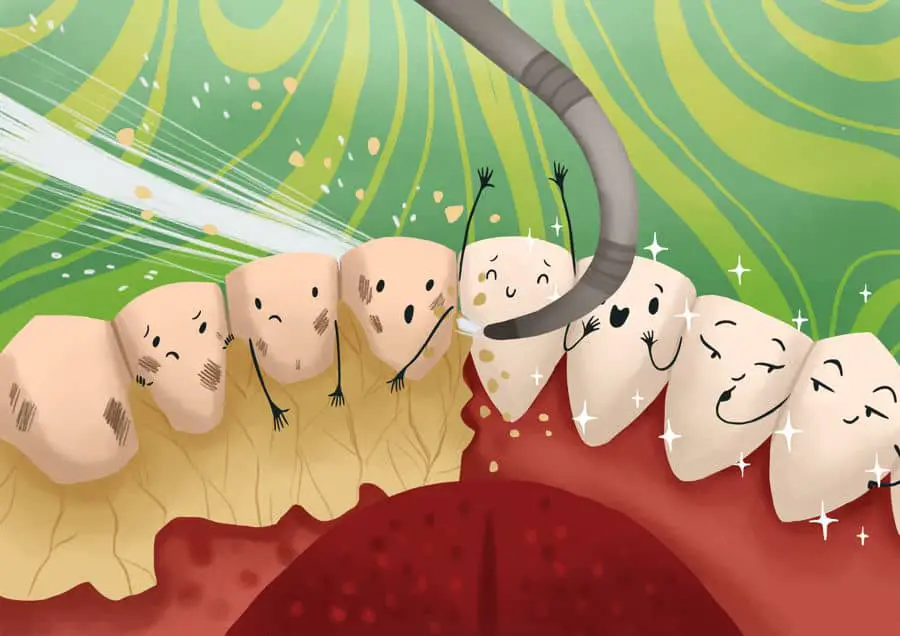
Breaking down the one-hour appointment
A dental hygiene cleaning is way more than “just a cleaning.” There is quite a bit of preparation that goes into your appointment. Below you can find out what really happens behind the scenes in the dental office for your appointment and how we clean your teeth!
Before your appointment starts: the prep work
The dentist will prescribe the X-rays in the morning meeting or at the previous appointment. This way the dentist doesn’t have to come in at the beginning of the appointment to prescribe them. However, you may not need them, so we won’t take them if we don’t have to.
While I’m cleaning your teeth, I will often refer back to your X-rays and look at how your teeth are shaped, where the bone level is, and if there is any build-up. Having X-rays allows me to be even more thorough with your cleaning.
I will review your chart to see areas that need to be observed again. Are we watching a certain tooth for decay? Is there active gum disease? How is your oral health routine, and is there room for improvement?
I will review your medical history and look for any concerns. For example, if you have a prescription to take premedication due to a heart condition or joint replacement.
I also look into any treatment that is outstanding. Is there a cracked tooth that needs a crown? Or have you followed through on a referral we gave you for a specialist? All the questions that I will need to ask you when you arrive.
Your appointment begins: you get called in from the waiting room
From the moment I call your name in the waiting room, I’m immediately assessing you. How are you looking health-wise? Are you walking okay, and do I need to assist you?
Let’s say you have a limp, is it because you just had surgery, or do you have arthritis?
Just from these two possible scenarios, I need to ask you a few questions; have you had a joint replacement or will you be having one? Have you talked to your doctor about premedication? Does your arthritis impact your hands and your ability to clean your teeth properly? I wrote an article if you need some suggestions on how to modify your toothbrush.
You sit in the chair:
Assessment
After I have assessed your overall appearance and you sit in my chair, I will review your medical history. I will ask about your allergies, medications and medical conditions.
If you are a new patient or have a history of blood pressure issues, I will check your blood pressure. I have actually had to send someone to their doctor immediately because their blood pressure was too high.
Dental appointments can be very stressful for some people, and if your blood pressure is already too high, the dental setting can cause it to go overboard. This can cause a major heart incident.
The head, neck, extraoral and intraoral exams are next. I look closely at your skin and oral tissues, any lesions? Any suspicious lumps or tissues that I can see or feel?
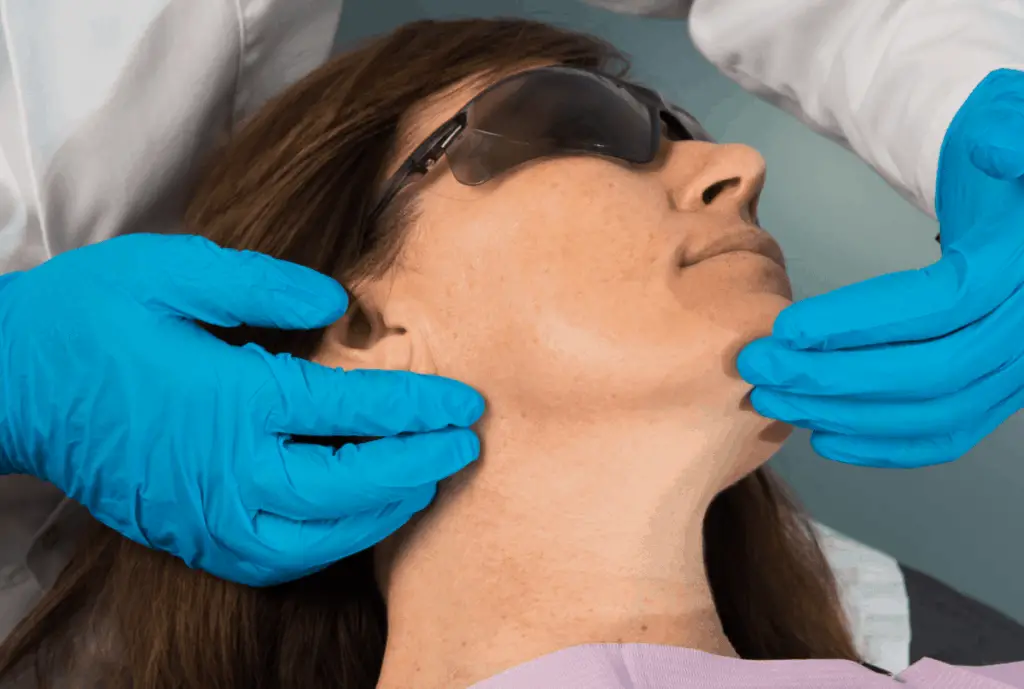
This is essentially a full once-over to check for anything concerning, such as cancer.
I check out all your teeth and how much build-up there is and assess your oral hygiene habits. I can see where you have missed brushing and flossing.
Next, I probe between the gum tissue and the tooth to see where your bone level is. If you have a deeper pocket and I miss it, the bacteria will just keep festering and cause more inflammation. This is why it is SO SO SO important to have a complete assessment prior to the actual cleaning.
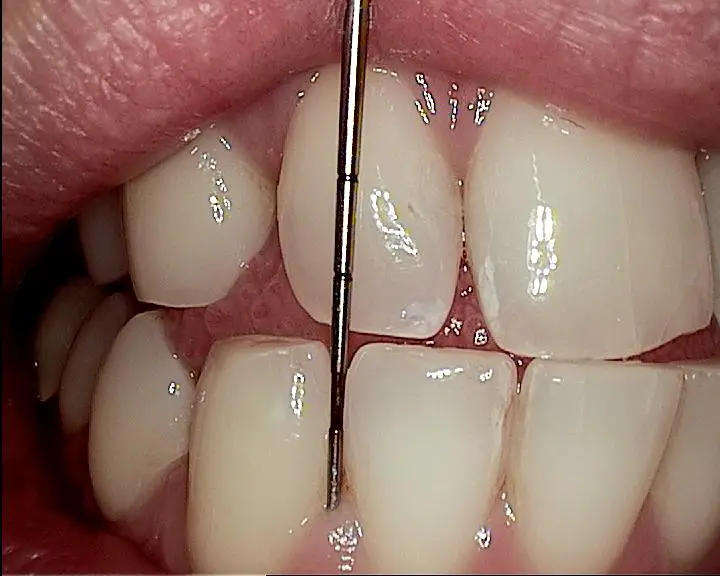
Now I know exactly the status of your mouth, and we can move on to the next step.
Diagnosis
Following the assessment, I will discuss with you your “dental hygiene diagnosis,” which is just a fancy way of saying that I am telling you that you have gingivitis and/or gum disease.
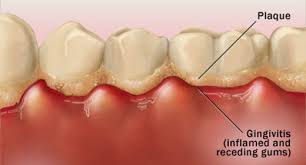
Gingivitis is the first stage of gum disease, and it is the inflammation of the gum tissue. If this inflammation is not resolved, you could end up with periodontal disease (also known as gum disease). Periodontal disease involves the gum tissue and all the ligaments that hold the tooth into the bone and the bone itself.
Planning
Next, I take all the information I’ve got so far and plan with you the best course of action to improve your oral health. If you have extensive gum disease, we may refer you to see a gum specialist, or if it’s more manageable, I may recommend you have more frequent cleanings until we get things under control.
I will also go over some oral hygiene instructions throughout the appointment but plan with you how you can improve your oral hygiene routine, such as how to properly clean under your dental bridge if you have one. I wrote an article about cleaning under your dental bridge, including pictures linked here.
Now the actual cleaning can begin! How fun 🙂
(maybe just for me)
Implementation
Do you ever wonder why there are a million tools on the tray? Each one has a purpose. Some clean the back teeth, others the front teeth, and some are just used on specific surfaces such as in between the teeth.
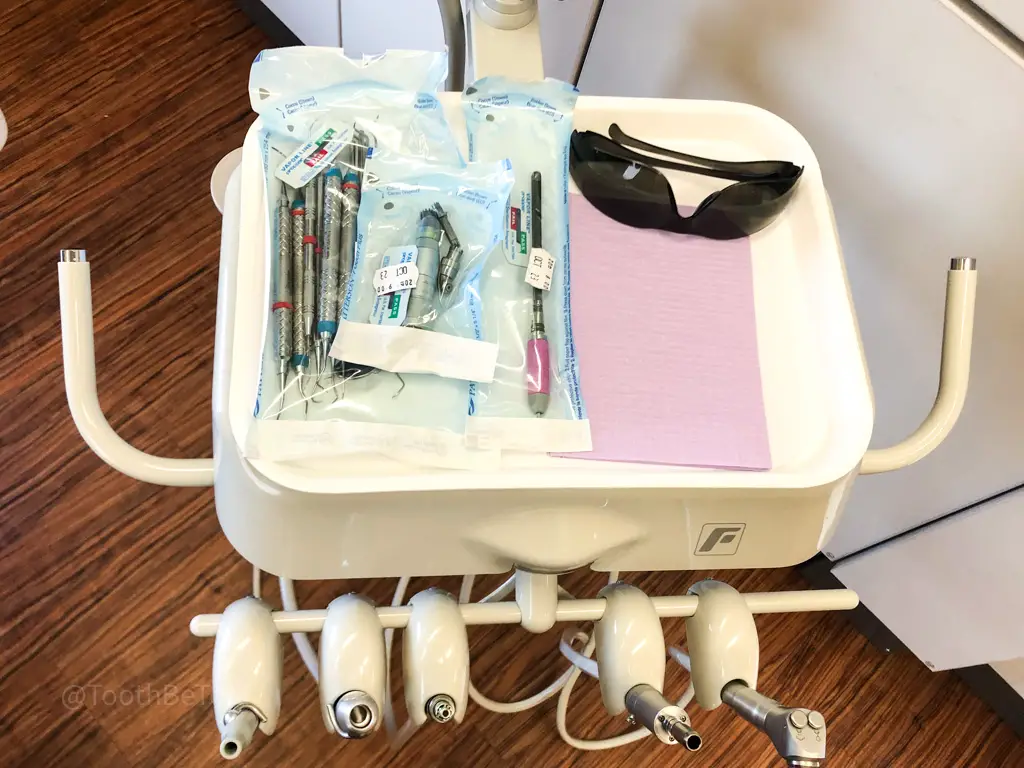
As we are cleaning, the instrument’s cutting edge (the sharp part) has to be at a certain angle against the tooth to properly take off the calculus (also known as tartar).
This is why knowing what tool can work in what area is so important in order to clean your teeth efficiently. If the proper angle is not used, the build-up on your teeth will not be removed properly, leaving some behind.
First, I try to get rid of most of the soft deposits (food and plaque). This allows me to see and feel the calculus (tartar) better. If there is too much plaque and food on the teeth, I cannot properly assess the tissues and teeth in your mouth.
Depending on your oral health status, I may begin by using an ultrasonic instrument. The one that uses all that water. This removes most of the plaque and calculus.
This instrument works by vibrating around 30,000 cycles per second. That’s a lot of POWER! Because of this vibration, when the tip of the instrument comes in contact with the bacteria, it causes the bacterial cell wall to break, killing the bacteria.
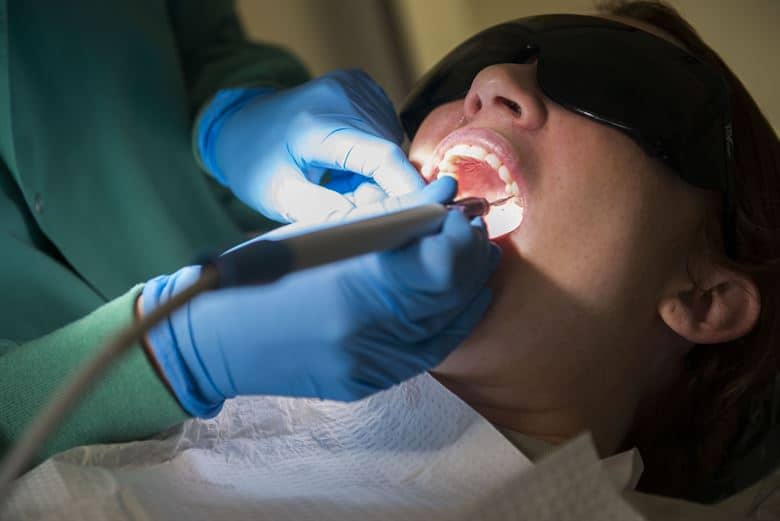
The bacteria that live at the bottom of the pocket and cause gum disease cannot live where there is oxygen. So by using the ultrasonic instrument, I am introducing water to the bottom of that pocket, creating an environment where the bacteria cannot thrive. This means that your body has a better chance of healing after cleaning.
We use hand instruments to fine-tune everything. I can feel more with these instruments, and they are usually thinner than the ultrasonic, so I can clean the super tight spot right where 2 teeth meet.
I have a routine that I always follow. And every hygienist has a routine that they stick to. I start on the bottom front teeth, then move to the back, and then I move to the top and do the same. Front teeth, then back teeth.
We are so strict at keeping our routine because we do this non-stop all day. We are only human and can lose track of where we are.
It can be easy to forget where you have cleaned and not cleaned if you have no routine. Especially if my patient and I are having a conversation or the appointment is interrupted in some way.
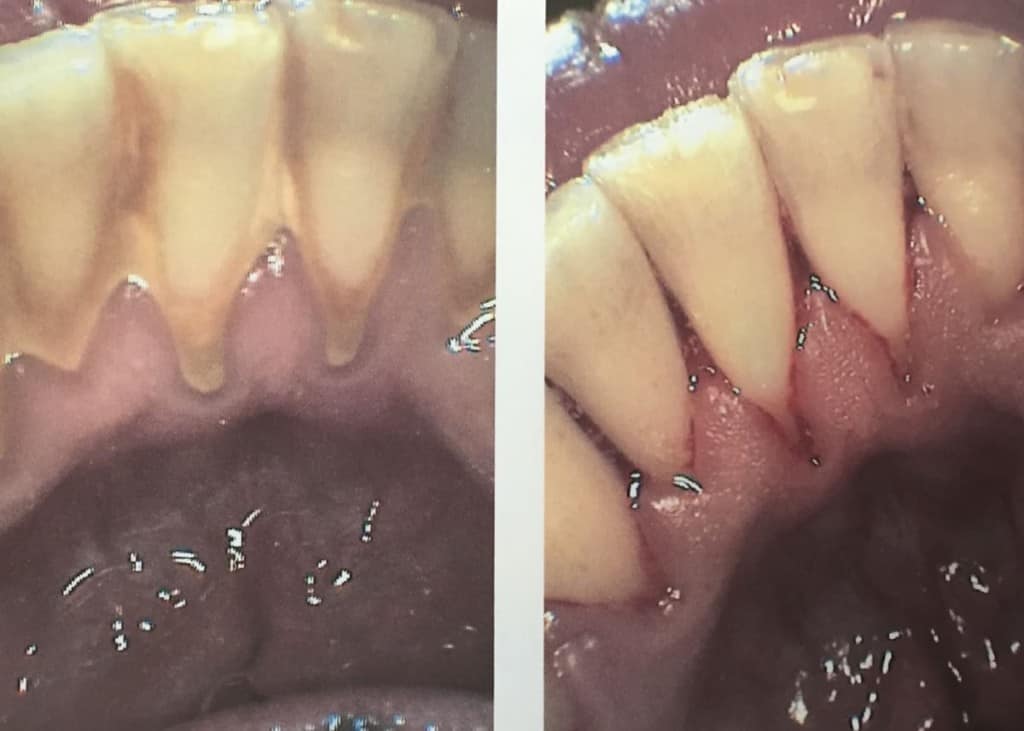
Before and After a dental cleaning
My next step after the cleaning is done is to check my work.
Do you ever wonder why we use air to dry your teeth? When dried, the calculus (tartar) that forms above the gum line will turn a chalky white colour. This gives it more contrast in colour when comparing it to the tooth so we can ensure we have got it all.
After I have completed the cleaning portion, I will always floss your teeth. This isn’t done to clear stuff out but rather to feel if I have cleaned everything. Because the floss is thin, when it is gently moved over your tooth, any discrepancies in the surface can be felt up the floss to my fingers. I floss to check my work.
When I can confirm that all the hard deposit is removed, I will then polish your teeth if you need it. Most people do not need a polish when their teeth are cleaned. You can learn more about why you shouldn’t get your teeth polished in this article I wrote.
You will want to use the information to ask your dental professional not to polish your teeth at your next appointment.
Evaluation
At your next appointment, I will evaluate how your mouth is responding to the cleaning and how you are getting on with your oral hygiene routine. I check if there is less plaque and build-up as in the previous appointment.
Are you flossing and brushing more, or has your technique improved? I go over everything we did at the previous appointment with you and ask you how everything is feeling.
When we evaluate your mouth, we are tracking progress. Sometimes you can be discouraged because you are either not feeling much different or can’t see the change, but when in reality, things have changed for the better.
When we evaluate consistently, we can look back over time and really see the difference in your oral health, even if you don’t. When this is shown to you, it can motivate you to continue, and it demonstrates that the things you are doing to improve are actually working.
It can go the other way as well. If you are neglecting your oral health, you will see it decline over time, hopefully motivating you to change your behaviour and improve your oral health.
Documentation
This happens throughout the appointment and is finished after you leave. Everything we did in your appointment is documented. When everything is written down correctly, we can follow your progress over time and give you a more comprehensive treatment, as mentioned before.
I hope this has given you some insight into what it’s like to clean your teeth.
I’m sure you can agree that a lot goes into a dental hygiene appointment. That is why I book an hour with my patients, and sometimes more than that if needed.
Having an appointment that is this long allows me to give you the best complete treatment you can get. I am extremely thorough, and I make sure I have enough time to answer all of your questions and address any concerns.
Happy smiling
Holly 🙂

